GimmeDaEggs
Chirping
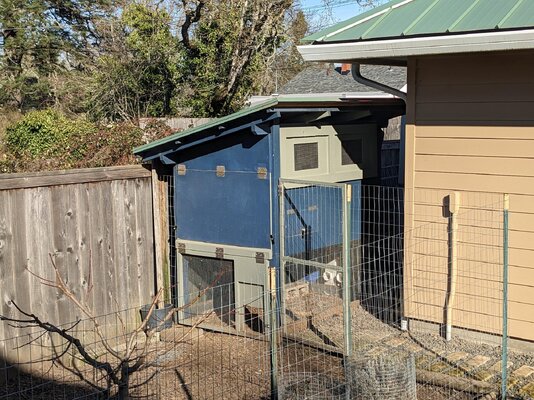
I am excited to share my coop with BackYardChicken! I have learned so much reading these forums and have decided to show you all my chicken setup. I would love to answer any questions people have about aspects of the coop and share more thoughts about any parts you're curious about.
The coop floor is 4'x6' and stands just a little over 7.5' at the highest point. The entire coop is sealed with 1/2" hardware cloth top to bottom. The roof is steel with polyiso foil insulation underneath to prevent condensation. The entire roof is suspended about 4" off the top of the coop for complete 360 degree ventilation so it stays very dry even in my damp winter climate. There is a large south facing window on the upper coop which I seal with a removable wall section with plexiglass windows in the winder to reduce draft and prevent blowing rain from damping the bedding.
The roost is 6' of 2x4" laid flat which is plenty of space for the 10 birds to snuggle up next to each other. There is a poop board positioned behind it, the chickens generally face the "window" side of the coop so poop in one direction while sleeping. The hanging blacks strips encourage this and the hanging fencing over the poop board remind them not to walk around or nest in the poop. The poop board rolls out and locks into place on an incline for easy scraping into a bucket which goes straight into the compost. Poop board is emptied about every 1-2 weeks. Because most of the poop goes onto the board I only have to change the litter about every 4-6 months depending on the weather and it accommodates a full bale of pine shavings or ~8cuft. There is a removable egg box with two compartments which is accessible from a small exterior door. The egg box is removed from the inside for easy cleaning. The entire upper coop wall opens for easy access and cleaning of the roost area and is large enough to crawl into.
The lower coop hosts the food and water systems. The lower hatch opens fully and is large enough to crawl under. The chickens access the upper coop through a perch which they jump up onto and then jump again up to the upper coop. No need for a space consuming ramp. We don't keep very heavy breeds or old birds.
The 55 gal barrel supplies water to four horizontal nipples through a PVC pipe. The barrel is tapped in the middle so the pipe draws from the center of the barrel, so only about 35 gallons is accessible. This is done to prevent the need to elevate a 400lb barrel (when full) and so no sediment can get drawn into the pipe. I refill this by garden hose about every 3-4 months. The feeders are 4x4" vinyl post and between them hold about 50lb of feed. Wooden squares ride down on the surface of the feed as it empties, and are tied to small washers drilled through the sides to provide an external indicator of when they're empty. The small feeder has 25 lb of oyster shell which the chickens never eat. I refill both feeders pelleted laying feed about every 2.5 weeks. There is little to no spill or waste, the feeder design encourages them to finish every crumb.
The coop door opens just before dawn and closes just after dusk. The door panel is a piece of scrap from the steel roofing. Two 20w incandescent bulbs in ceramic fixtures supply lighting in the upper and lower coop areas. The automated lighting provides 15 hours of lighting year round. This means the lights are off completely for a few weeks in the summer and run for a maximum of about 7 hours in the winter. Automation via Kasa smart plug, Google home and Kasa app. Both the door and lights are manually controllable through Google Home integration.
The chickens roam in a large run about 15x25 feet with caged herbs they can snack on. There are two cherry and a peach tree protected with wire in the run which provide shade in the summer and benefit from the chicken manure for fertilizer. At the opposite end of the run is our two bay compost system which they graze on and poop in for us.
Hope you have enjoyed reading this description and seeing the photos! Please let me know if you'd like any further details and your thoughts on my coop!
A few specific product notes:
-Automated door is the "Add-a-Motor D20"
-Credit to @TwoCreativeChicks for their feeder design, this is by far the best PVC feeder design out there and not widely shared enough, 5x5" vinyl fence post with end caps and 3 1/2" PVC street 90 degree elbow
-Automation of lights and door is with a TP-Link KP400 Kasa Smart Wi-Fi Outdoor Plug
-PVC pipe is inserted into barrel with a "Uniseal"
Attachments
-
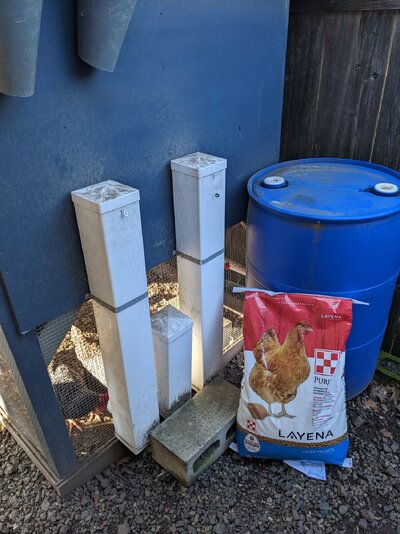 PXL_20230212_223420851.jpg591.5 KB · Views: 79
PXL_20230212_223420851.jpg591.5 KB · Views: 79 -
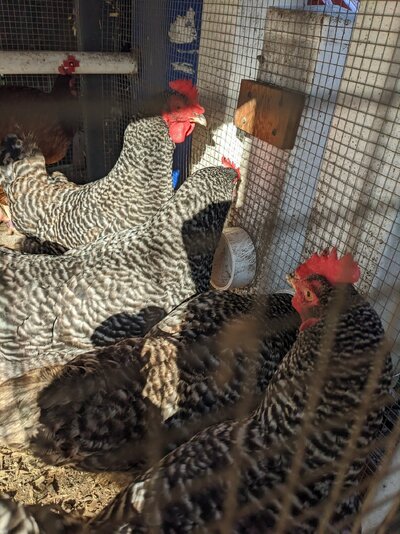 PXL_20230212_223459739.jpg700 KB · Views: 69
PXL_20230212_223459739.jpg700 KB · Views: 69 -
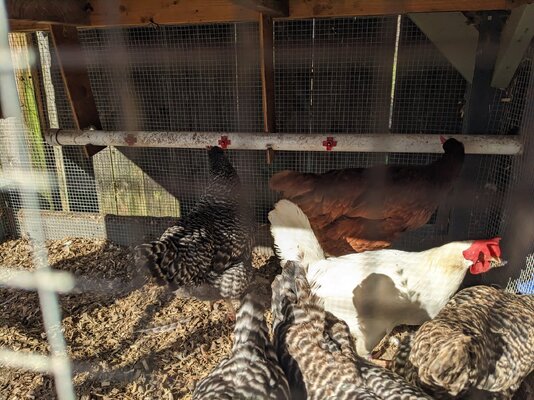 PXL_20230212_223505878.jpg739.7 KB · Views: 69
PXL_20230212_223505878.jpg739.7 KB · Views: 69 -
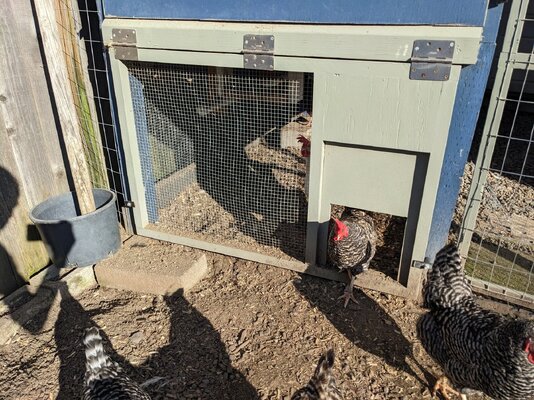 PXL_20230212_223518992.jpg951.3 KB · Views: 73
PXL_20230212_223518992.jpg951.3 KB · Views: 73 -
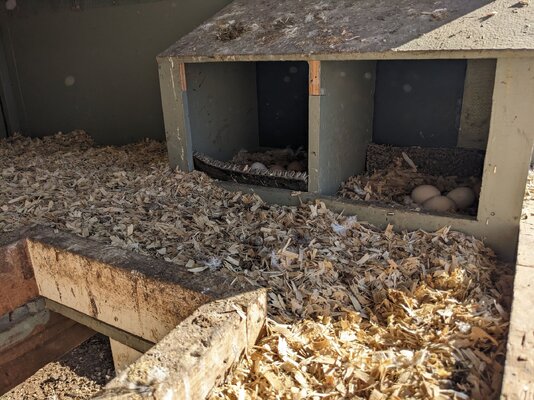 PXL_20230212_223554874.jpg679 KB · Views: 69
PXL_20230212_223554874.jpg679 KB · Views: 69 -
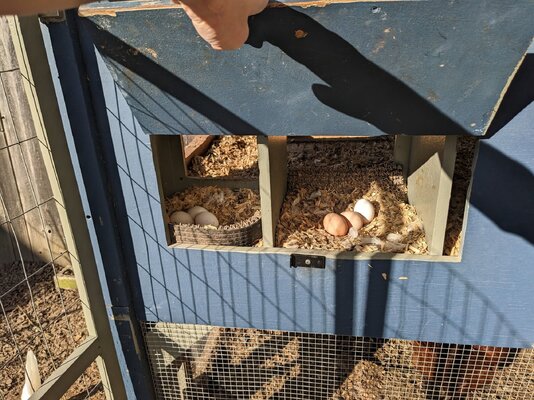 PXL_20230212_223607075.jpg669.2 KB · Views: 77
PXL_20230212_223607075.jpg669.2 KB · Views: 77 -
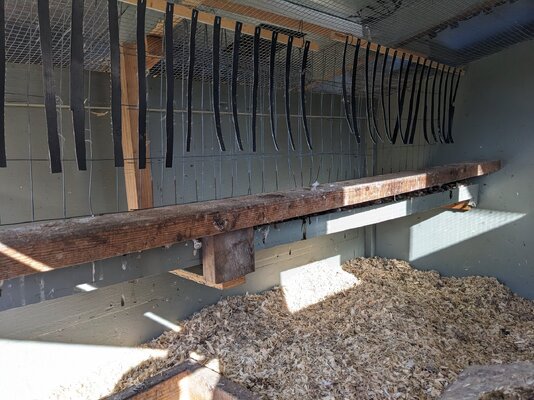 PXL_20230212_223634708.jpg684.5 KB · Views: 77
PXL_20230212_223634708.jpg684.5 KB · Views: 77 -
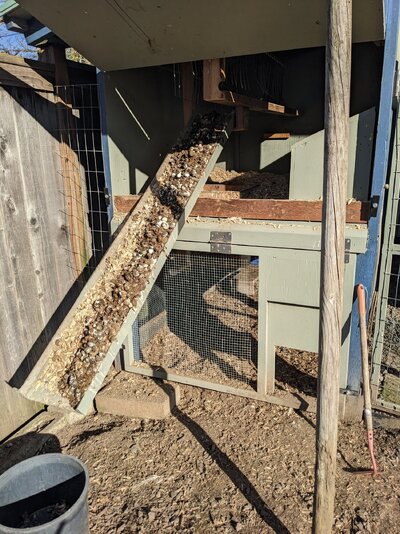 PXL_20230212_223744272.jpg917.8 KB · Views: 72
PXL_20230212_223744272.jpg917.8 KB · Views: 72 -
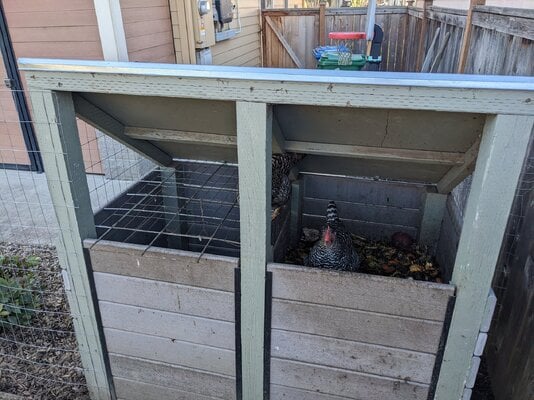 PXL_20230212_223941056.jpg683.7 KB · Views: 66
PXL_20230212_223941056.jpg683.7 KB · Views: 66 -
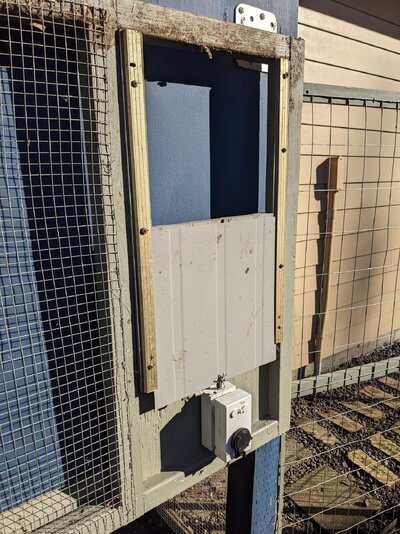 PXL_20230212_225530519.jpg745.4 KB · Views: 71
PXL_20230212_225530519.jpg745.4 KB · Views: 71 -
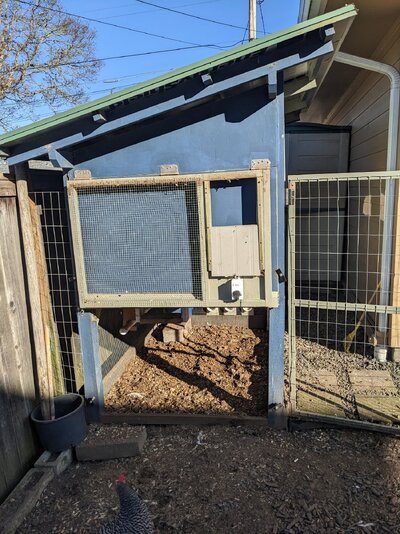 PXL_20230212_225540897.jpg838.8 KB · Views: 65
PXL_20230212_225540897.jpg838.8 KB · Views: 65 -
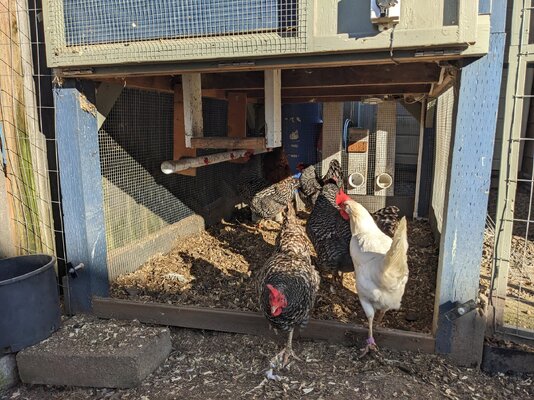 PXL_20230212_225612143.jpg880 KB · Views: 75
PXL_20230212_225612143.jpg880 KB · Views: 75 -
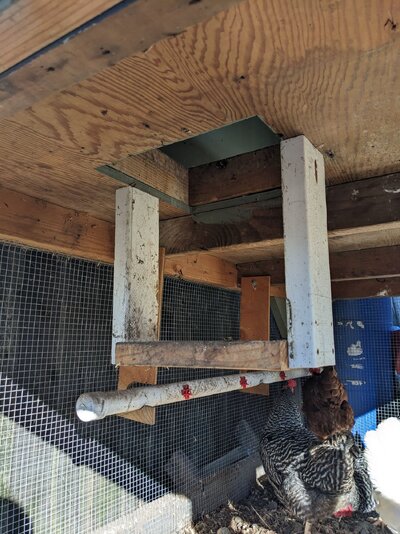 PXL_20230212_225621561.jpg677.8 KB · Views: 73
PXL_20230212_225621561.jpg677.8 KB · Views: 73 -
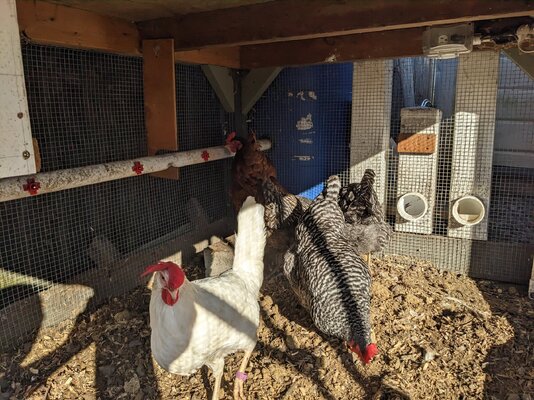 PXL_20230212_225627051.jpg842.7 KB · Views: 69
PXL_20230212_225627051.jpg842.7 KB · Views: 69 -
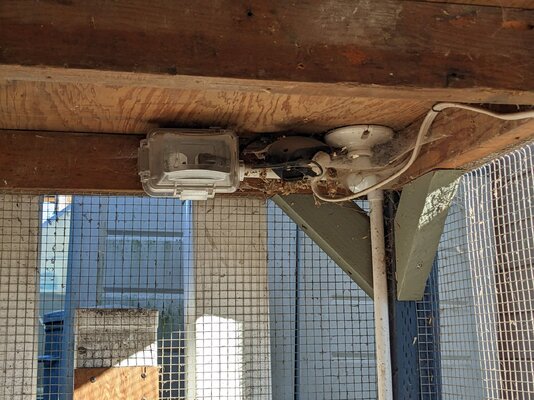 PXL_20230212_225642233.jpg590.2 KB · Views: 57
PXL_20230212_225642233.jpg590.2 KB · Views: 57 -
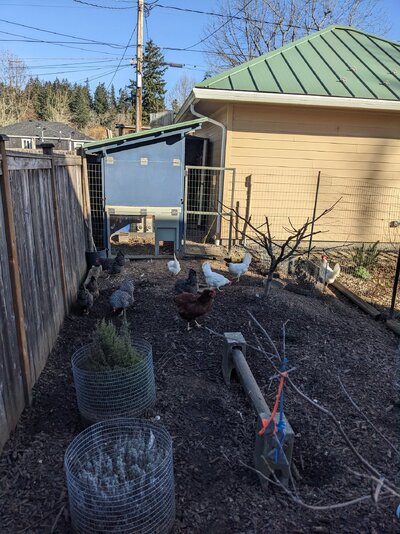 PXL_20230212_230407162.jpg824.5 KB · Views: 62
PXL_20230212_230407162.jpg824.5 KB · Views: 62 -
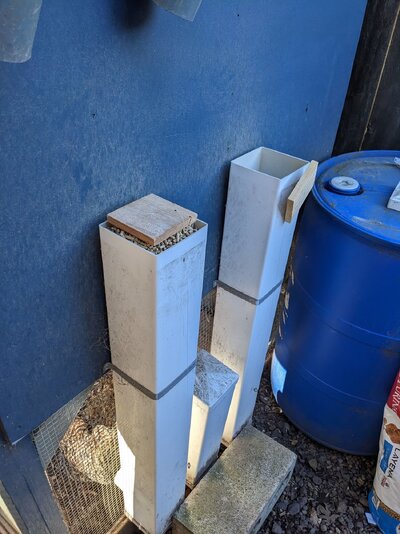 PXL_20230212_231303253.jpg555.9 KB · Views: 72
PXL_20230212_231303253.jpg555.9 KB · Views: 72 -
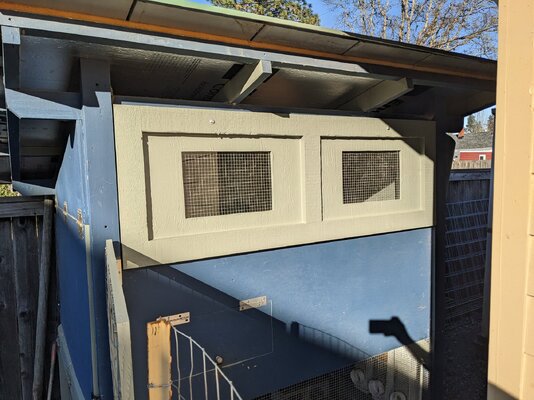 PXL_20230212_231730339.jpg584.7 KB · Views: 64
PXL_20230212_231730339.jpg584.7 KB · Views: 64 -
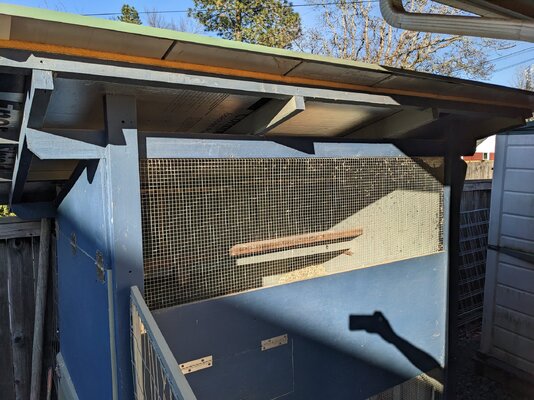 PXL_20230212_231941896.jpg670.8 KB · Views: 58
PXL_20230212_231941896.jpg670.8 KB · Views: 58 -
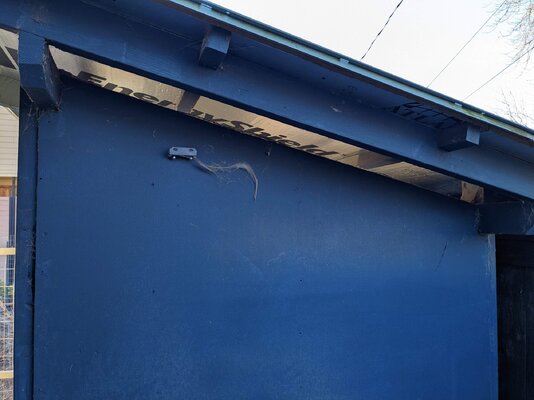 PXL_20230212_232001800.jpg344.5 KB · Views: 66
PXL_20230212_232001800.jpg344.5 KB · Views: 66 -
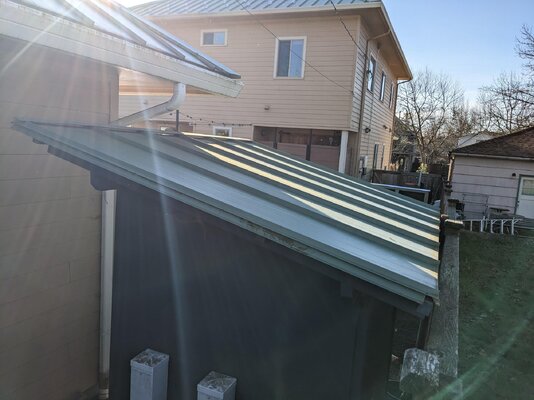 PXL_20230212_232010298.jpg419.6 KB · Views: 65
PXL_20230212_232010298.jpg419.6 KB · Views: 65
Last edited:





